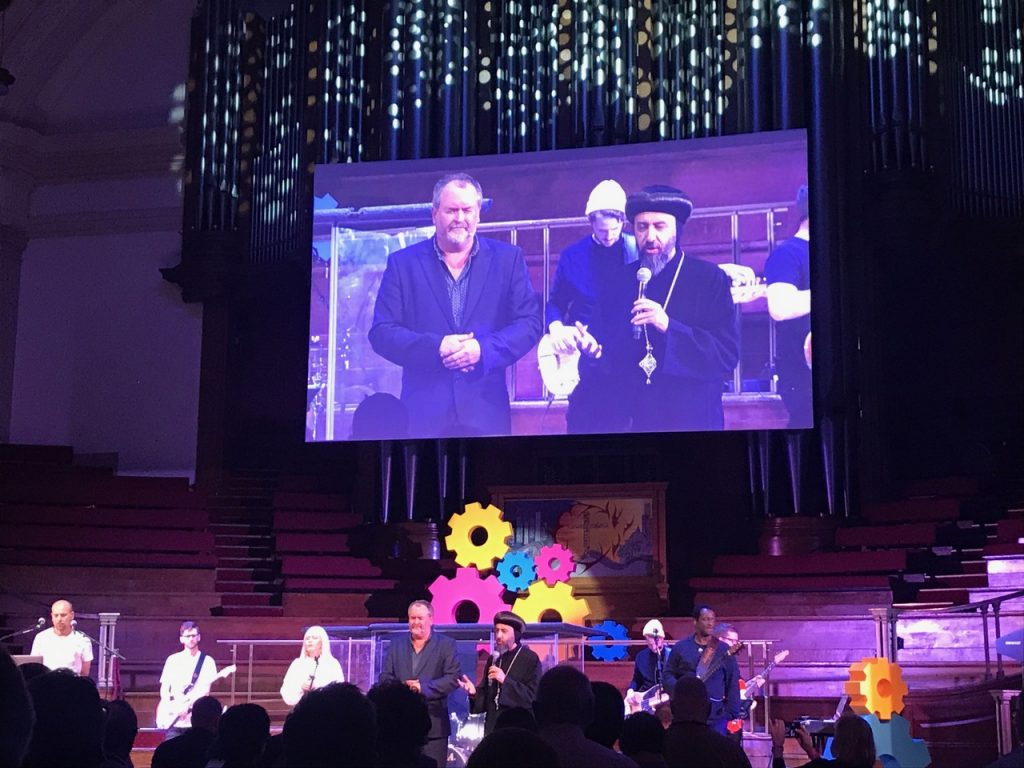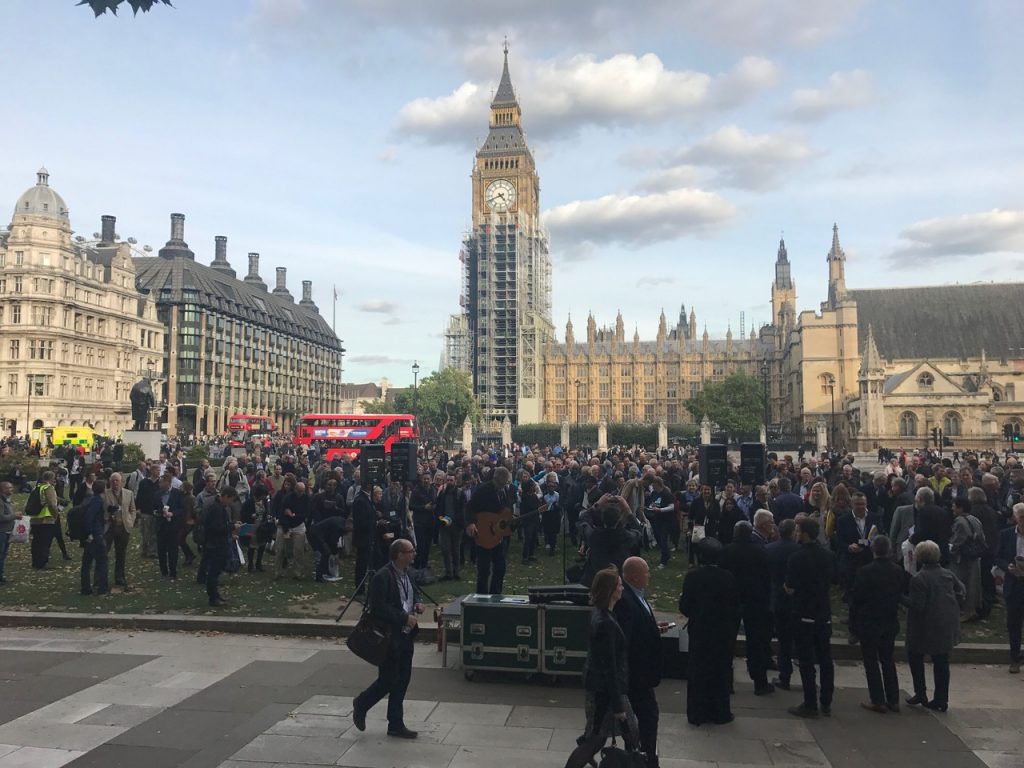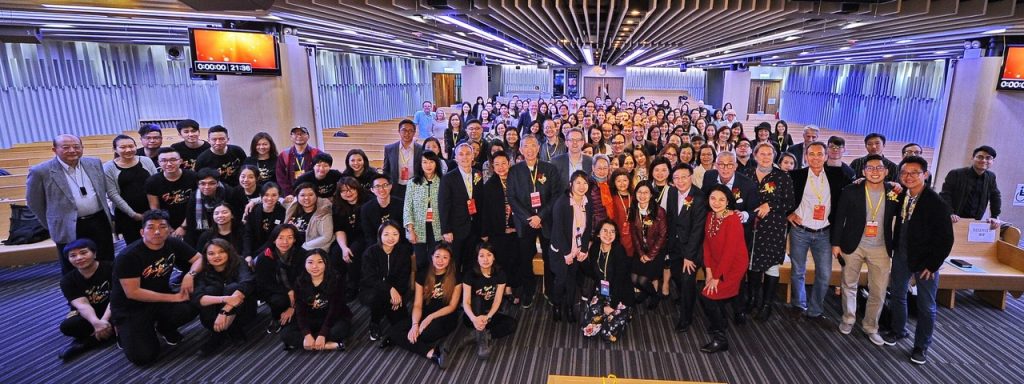One morning in 2010, Tim Keller, founding pastor of Redeemer Presbyterian Church in New York City, sat down for breakfast with Bob Doll, a highly respected investment manager. They had first met a year before at a fundraising event in New York, and on that October morning in Cape Town, they were both participants in the Lausanne Movement’s Third Congress on World Evangelization.
‘Tim asked me a zillion questions as we reconnected, and then said, “I’ve got someone I want you to meet,”’ recalls Doll. A few hours later, Keller and Doll sat down for their second breakfast of the day, this time with Mac Pier, longtime friend of Keller and the founder of The New York City Leadership Center (NYCLC, now known as Movement.org).
As the three spoke that morning, something ignited between them, and over the course of the congress, that spark grew steadily into a roaring fire. Their unique callings as pastor, marketplace leader, and non-profit expert came together to form an unconventional ‘three-legged stool’ that they believed was the key to realizing a vision they all yearned for: the acceleration of the gospel in New York City.

‘The natural tendency is for each leg of the stool to think they can do it alone,’ says Doll in retrospect. ‘But to launch a movement in the city, you need the strength of all three.’ From their collaboration in Cape Town, Movement Day, which serves as the Lausanne Movement’s network on cities, was accelerated into a global movement. Its vision echoed the Cape Town breakfast meetings: gather ministry, marketplace, and nonprofit leaders who, despite their differences, share the same passion for their city and the gospel of Jesus, and then inspire and equip them to link arms in collaboration.
‘Movement Day is an ecosystem gathering,’ says Pier. ‘The conviction underneath it is that the vibrancy of the gospel in the city is in proportion to the depth of unity between different members of the same ecosystem.’ Keller, Doll, and Pier—three different but influential members of the New York ecosystem—had no ambition for anything larger than New York when they joined forces over toast and coffee in Cape Town. But God was setting the stage to do immeasurably more in the cities of the world.
For the first time in human history, more than half the world’s population lives in cities, with that number sharply rising every year. In fact, every 30 days the equivalent of a new San Francisco is birthed somewhere in the world. The city is where the most numbers of the next generation of young people, the most unreached migrant peoples, the culture shapers, and the poorest of the poor all live together in a glorious jumble of discord and harmony, brokenness and beauty.

But is the church moving into the city fast enough? Jurie Kriel, Director of Movement Day Expressions and a Catalyst for the Lausanne Network on Cities, says that sadly, ‘As the population density increases, the effectiveness of the gospel decreases. Unless the church answers the questions cities are asking of it, the gospel will increasingly lose its relevance to the generations that are to come.’
Keller, Doll, and Pier realized in Cape Town that keeping the church relevant in New York necessitated the unity of its leaders across all workplaces. Furthermore, they realized that a paradigm shift for success needed to happen if a municipal movement was to take hold. ‘We tend to think only about how our own individual church or organization is doing, rather than thinking about what the impact of Christianity is in the city as a whole,’ says Pier. ‘But successful churches don’t necessarily mean a flourishing city.’ What might it look like, then, for churches to partner with each other and with marketplace and nonprofit leaders to dream, pray, and strive at a city-wide level?
Despite the lack of promotion and advertising, participants from 34 US states and 14 different countries showed up to the first Movement Day in 2010, held shortly before the Cape Town congress. Pier jokes, ‘What’s the moral of the story? It’s that people from Australia will hop on a plane to the US just to hear Tim speak.’
Keller may have been the most visible of the three, but it was the radical generosity of Doll and others that gave Movement Day greater momentum, as well as Pier’s extensive knowledge of and vision for New York that guided the initiative. Furthermore, the broad support for the movement was wrought in large part to the diverse occupations of its senior leaders, whose combined followings resulted in a wider reach than if each had gone at it alone.
As Movement Day continued to strengthen its foundations, the concept of ‘coming together across denominational, ethnic, geographical, and socio-economic lines’ struck a chord in many urban Christians leaders who longed for revival and unity in their own cities.
By 2015, the movement had expanded beyond the boroughs of New York and across the seas to Pretoria, South Africa, where the first Movement Day outside the US was held. In 2016, Movement Day hosted its first global gathering, drawing three thousand people from 400 cities and 95 countries. Pier believes this was the largest missions conference in New York in a hundred years. This catalytic moment led to an explosion in the movement, growing their influence from four cities to two hundred worldwide in just 30 months.

What began as an earnest desire to impact the city of New York is now a passion to see the gospel brought to the cities of the world. As a Catalyst for the Lausanne Movement’s Cities Network along with Kriel, Pier harnesses the networking power of Lausanne to mobilize leaders in every corner of the globe to advocate for collaboration in cities. He believes that ‘God uniting leaders in big cities is the next reformation . . . If we are able to influence 500 cities around the world, it’ll alter the trajectory of global Christianity.’
‘There’s nothing as powerful as an idea whose time has come,’ concludes Kriel. ‘But an idea whose time has come needs a catalytic moment in order to become a reality. Movement Day was an idea whose time had come. The intent of God for cities[,] the church waking up to the need for a new strategy for the gospel in cities, and understanding we’re better together—all these things came together and found a catalytic moment at a breakfast in Cape Town.’
Pray with Us
By Mac Pier
Sovereign God, we see you bringing the nations of the world into the neighborhoods of our cities. Unite your church city by city to have a powerful, relevant witness to the ends of the earth now located in our cities. May our love for each other and the unity of your church breathe the aroma of belief your son prayed for the night before he gave his life for the world.
Related Links
- Lausanne Network on Cities
- ‘Church in the Skyscrapers’ – a video from GWF
- Bring Movement Day to Your City
- Cities: An Infographic
- ‘How Do You Reach Cities?’ – Tim Keller

